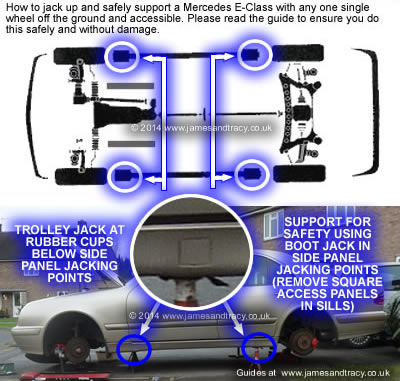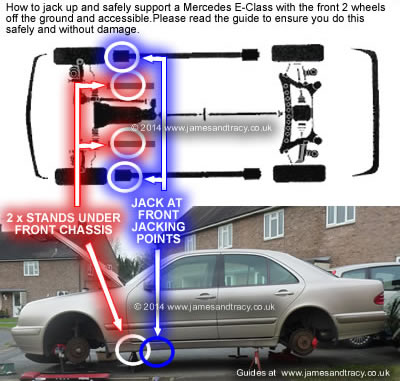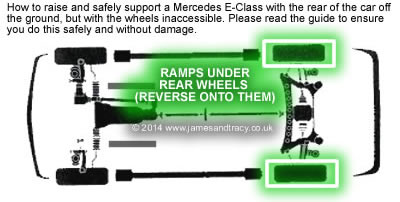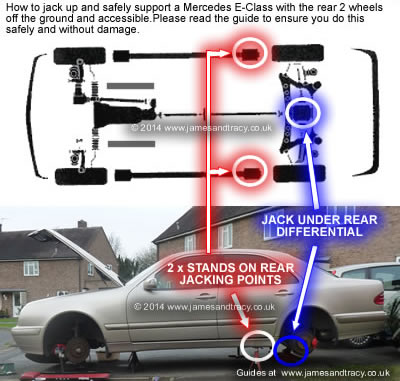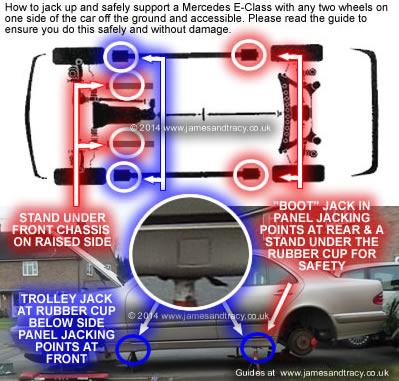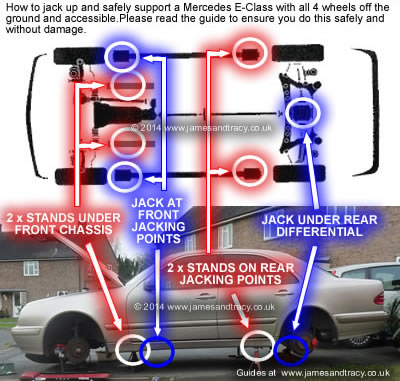
The Rules for Jacking Cars |
| Please read these first as your safety is critical |
|
|
|
|
|
|
|
Always use ramps as a preference to jacks and stands. Ramps are far safer as they are more stable, but they do not allow access to the wheels so cannot always be used. |
Always raise or lower a car slowly and watch any stands that are in position carefully. Jacking and lowering a car roughly can knock it off stands or jacks. Consider using 2 trolley jacks working on either side of the car if you are raising the two wheels at the front. This approach is easier and less likely to unbalance the car. |
Never work on a raised car until you have checked everything and finally given it a good shake to see that it is cannot fall off the stands or ramps. |
Always use your common sense. If you don't have any, then back away from the car and leave it to a garage or you'll probably find yourself being cleansed from the gene pool. Basically, trust your instincts, if you think something looks unsafe, it probably is. |

Index to Jacking Modes and Equipment Required |
|
| Jacking Mode | Minimum Equipment Required |
|
|
| 2 ramps or 1 jack and 2 axle stands |
|
| 1 jack and 2 axle stands |
|
2 ramps or 1 jack and 2 axle stands |
|
1 jack and 2 axle stands |
|
1 jack and 2 axle stands |
|
1 jack and 4 axle stands |
|
| Click on the jacking mode to go to the relevant section in this guide | |
